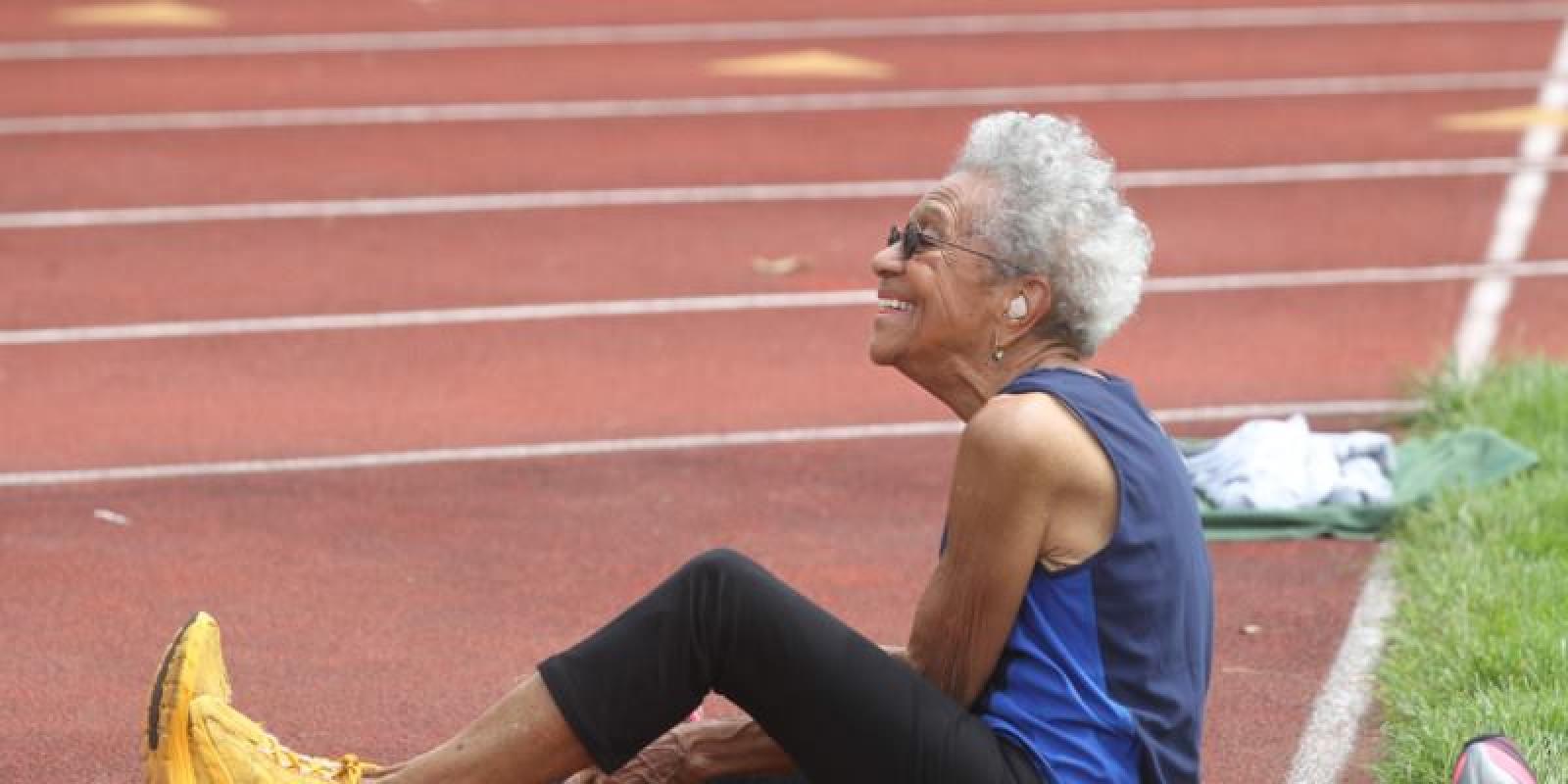Ida Keeling, renowned centenarian track and field record holder, started running at age 67 and set world records until age 102. A few years ago, Ida was interviewed for the United Nations International Day of Older Persons. When asked about her plans for the future, she said she wanted to, “start a website for the healthy—from babies on up—especially for people of 100 and beyond.” And she did start a website, launching Healthy Past 100 shortly after that interview.
Oct. 1 is the U.N.’s International Day of Older Persons, and this year’s focus is Digital Equity for All Ages.
Almost half of the world’s population is still offline, and older people make up a significant portion of those who are on the “wrong side” of the digital divide. During the COVID-19 pandemic, many of us with access to technology have embraced it to continue working and keep up social interactions. But those lacking access to technology have seen inequalities accelerated—from social isolation to reduced access to healthcare, education and work opportunities.
‘Ensuring access to technology is a critical step in addressing inequality around the world.’
In short, the last year and a half has exacerbated conditions that were already problematic. And a recent article in Harvard Business Review found that the divide also reinforces racial inequalities—in the U.S. alone, almost half of households without at-home internet are Black and Hispanic.
It’s clear—ensuring access to technology is a critical step in addressing inequality around the world. But when it comes to older adults, they often are considered a low-priority market for the tech industry. Nevertheless, closing the digital equity gap is a social and economic imperative and human rights issue whose time has come. So here are three things leaders across sectors should know about tech use and older adults, and how private industry can help improve lives while still improving their bottom line:
- Older people need technology. We know that technology helps older adults fight isolation and gain access to healthcare. Technology can help older adults stay active and independent. For instance, virtual-reality headsets are being used to help people living with dementia, while smart speakers are being used in cases of social isolation. Technologies developed to address these trends, particularly those in healthcare, like telehealth, represent a large market for the tech industry. And as demographics continue to shift, this market will only grow for decades into the future.
- Technology needs older people. Tech industry tends to be exclusively focused on youth—in product design and in company staffing. But tech companies that want to grow need to look beyond that demographic. First: AARP’s Longevity Economy Outlook report found that on the right side of the digital divide, Americans ages 50 and older were in 2018 worth more than $9 trillion. And they spent $140 billion on technology, a figure that is expected to nearly double by 2030. Throughout the pandemic, older adults also have significantly increased their use of technology—including video chats, texting, email and phone, all as a way of staying connected with friends and family. A recent AARP study found that 82 percent of people older than age 50 depended upon technology to stay connected with family and friends throughout the pandemic. However, cost remained a significant barrier to greater technology adoption among older adults. Finally, research shows that age-diverse workforces maximize profits, performance and employee satisfaction. Tech companies that hire older people should fare better.
- Leaders must help to bridge the divide. The Digital Divide is multifaceted—digital literacy must be addressed with trainings and other support as critical first steps to ensure digital equity for all ages. Access to and affordability of devices also is key. But perhaps most important in this effort is robust internet access, which can make or break a person’s ability to keep up—from early education all the way to the end of life. However, there are great disparities in internet access depending upon where one lives. An older adult living in a rural area is almost twice as likely to lack internet access as is someone living in an urban area. Improving internet access around the world would be a first-of-its-kind undertaking requiring public-private collaboration on a global scale. But a partnership at that level would create meaningful change for people everywhere, along with strength and sustainability for economies around the world. This is why one of AARP’s strategic priorities is addressing digital equity, elevating solutions at major forums at the United Nations and building partnerships with organizations like Older Adults Technology Services (OATS) to help more older adults access and optimize technology to transform their lives and communities.
Ida Keeling sadly passed away a few weeks ago at age 106. She was a shining example of what adults can accomplish later in life—breaking track and field records and using new technologies, even in her 90s and 100s.
I wonder how many Idas are out there in the world. Who has the grit and determination to break records at age 100, if only they had the chance? Whose story will inspire us and challenge stereotypes? And whose life will be saved, simply because they have the ability to connect with loved ones and healthcare providers? To compete in a changing world, the next Idas will need access to technology—for education, for athletic competition and maybe even for website building.
We can work together to lift up the next Idas. All we have to do is ensure they have the tools they need. Will you join us?
Jean C. Accius, PhD, is senior vice president at AARP Global Thought Leadership in Washington, DC.













